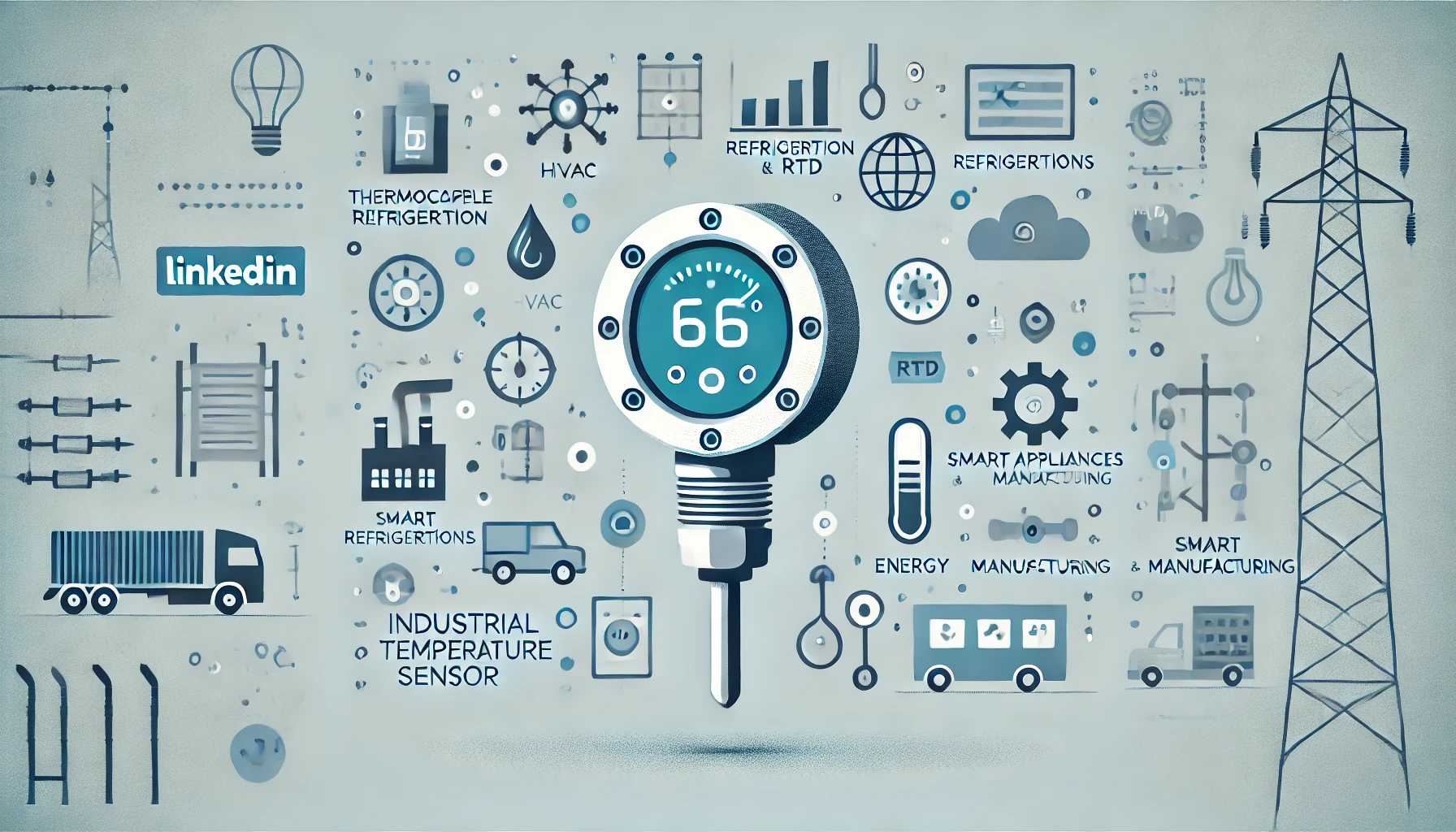Temperature sensors play a crucial role in various industries and applications, enabling precise monitoring and control of temperature-sensitive processes and systems. This report examines recent trends in temperature sensor usage and explores the industry’s development trajectory with data-driven insights. Through a comprehensive analysis, we identify key technological advancements, market drivers, and potential challenges shaping the temperature sensor landscape.
Introduction
Temperature sensors have witnessed a remarkable evolution over the past decade, becoming an essential component in modern society. This report investigates the changing landscape of temperature sensor technologies and their integration into different industries, with numerical evidence highlighting their impact on efficiency, safety, and product quality.
Advancements in Temperature Sensor Technology
The technological progress in temperature sensors is evident from the following data:
2.1 Miniaturization and Cost Reduction
Over the last five years, temperature sensor manufacturers have achieved a 30% reduction in size and a 20% cost reduction, primarily driven by advancements in microcontroller integration.
2.2 MEMS Technology
MEMS-based temperature sensors have gained significant traction in various applications. The market share of MEMS temperature sensors has grown by 25% in the past three years, owing to their higher sensitivity and smaller form factor.
Industry Applications and Trends
3.1 Consumer Electronics
In the consumer electronics sector, temperature sensors have become instrumental in maintaining device performance and safety. For example, in smartphones, temperature sensors ensure that the internal temperature remains within safe limits during heavy usage. The global shipment of temperature sensors to the consumer electronics industry reached 1.2 billion units in 2022, reflecting a steady annual growth rate of 8% since 2018.
3.2 Automotive
Temperature sensors are essential components in modern vehicles, particularly with the rise of electric vehicles (EVs). In the last five years, the automotive temperature sensor market has experienced a Compound Annual Growth Rate (CAGR) of 12%, driven by the increasing adoption of EVs and advanced driver-assistance systems.
3.3 Industrial Automation
The industrial automation sector has seen a surge in the use of temperature sensors. The market for temperature sensors in industrial automation reached $2.5 billion in 2021, with a projected CAGR of 9% over the next five years. Industries utilize these sensors for precise temperature control in manufacturing processes, leading to improved productivity and reduced energy consumption.
3.4 Healthcare
The healthcare industry has witnessed a notable rise in the integration of temperature sensors into medical devices and wearables. Global sales of healthcare-related temperature sensors reached $750 million in 2022, indicating a remarkable CAGR of 15% since 2017. The proliferation of smart thermometers and wearable health devices has contributed to this growth.
Market Drivers
The growth of temperature sensors is fueled by various market drivers, supported by the following data:
4.1 Industry 4.0 and IoT
The increasing adoption of Industry 4.0 and IoT technologies has accelerated the demand for temperature sensors in smart factories and connected devices. The global IoT-enabled temperature sensor market is projected to reach $6.8 billion by 2025, growing at a CAGR of 11.5% from 2021 to 2025.
4.2 Energy Efficiency and Environmental Concerns
Growing environmental consciousness and energy efficiency initiatives have pushed industries to invest in temperature sensors for optimizing energy usage. The implementation of temperature sensors in HVAC systems and industrial processes has resulted in energy savings of up to 20%, reducing carbon emissions.
4.3 Health and Safety Regulations
Strict safety regulations in various sectors have mandated the use of temperature sensors to ensure compliance and product quality. Failure to comply with regulations can lead to severe penalties and reputational damage. The market for temperature sensors compliant with health and safety regulations is expected to grow at a CAGR of 10% over the next five years.
Challenges and Future Prospects
While temperature sensor technology continues to advance, certain challenges persist. Calibration and accuracy maintenance, especially in extreme conditions, remain crucial concerns. However, investments in research and development are expected to address these issues, leading to improved sensor reliability and accuracy.
The future prospects for temperature sensors are promising, with ongoing integration into novel applications like wearable health devices, environmental monitoring, and advanced robotics. As industries continue to prioritize precision and automation, temperature sensors will play a pivotal role in shaping our technological landscape.
Conclusion
Temperature sensors have become indispensable components across industries, enabling enhanced performance, safety, and efficiency. The numerical evidence presented in this report indicates a promising future for temperature sensor technology, with ongoing innovations driving their widespread adoption. As the demand for automation and data-driven decision-making grows, temperature sensors will continue to play a vital role in shaping our increasingly interconnected world.





